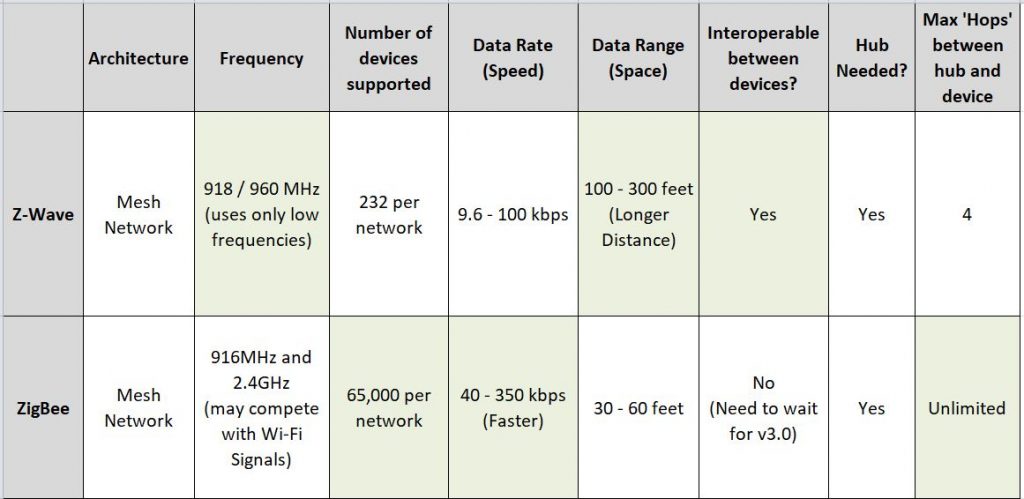![]()
Home automation is quite popular now in most household and it is common to see retailers dedicate quite a lot of display space to them. I was in a local Best Buy store recently, and was delighted to find a few aisles of home automation products on display and lots of fun to explore and see them in action.
While having fun with the products, I started to realize that there are a few words that start to pop up on each box that an average consumer probably will have a hard time understanding. They are the standards supported by each device, aka “protocol”. Something like Wi-Fi and Bluetooth are commonly understood by most consumer nowadays, but 2 new words seems to appear quite often, Zigbee and Z-Wave. So what are they? They are 2 popular home automation standards that are similar but yet quite different. Please keep in mind that although they both start with a ‘Z’, they are 2 different standards and they not compatible with each other.
In this article, let’s explore the similarities and differences between them. The goal is to provide a simple and clear summary so that you will understand and choose wisely between them.
Let’s first establish some basic requirements for home automation devices:
- Low power consumption: they are usually little devices that runs on battery, so they need to run for months if not years between battery changes.
- Low data rates: they usually don’t need to be too verbose, usually simple command such as light on, light off.
- Low Maintenance: they need to be something that get easily installed and just continue to work.
- Low cost: this is probably self explanatory, so no further explanation needed.
Both Zigbee and Z-Wave are popular standards for home automation products and competing head to head in their product space. It is estimated that Zigbee has about 25K products while Z-Wave has about 24K products currently in the marketplace.
What is common between them? Let’s first get that out of the way:
- They are both mesh networks, meaning signals can hop from one device to another, and each device will serve both as a transmitter and receiver.
- They both need a central hub which will connect to the internet.
- They both uses the same AES-128 symmetric encryption.
Next let’s discuss the differences between them:
- Z-Wave allows up to 4 ‘hops’ between the hub and the device while ZigBee doesn’t have a limit.
- Z-Wave protocol has a much stricter requirement that requires that every Z-Wave device work with every Z-Wave hub controller, while Zigbee has several sub-protocols, which will cause compatibility issues and products between vendors may not work with each other. The latest, Zigbee 3.0 claims to solve this problem, but you may need to wait till enough products become 3.0 certified.
- Z-Wave operates at low frequency bands only 918/960 MHz, while Zigbee operates on both 916 MHz and 2.4 GHz, which may get interferes from the popular Wi-Fi bandwidth.
- Z-Wave support a maximum of 232 devices per network hub, while Zigbee can support up to 65,000 devices. This may not be a major concern as 232 devices are probably plenty for most household, and Z-Wave does allow you to bridge multiple network hub together.
- Z-Wave has a bigger data range, 100 – 300 feet, while Zigbee has a data range of 30 – 60 feet.
- Z-Wave has a slower data rate, 9.6 – 100 kbps, while Zigbee usually transmit faster between 40 – 350 kbps.
Heads spinning yet? Below is a simple table hopefully will summarize it to you. Boxes highlighted in green just mean it has some advantage, but it is only relevance based on your specific requirements.
As you can see, Z-Wave and Zigbee are 2 different yet similar standards for home automation, will we see an industry consolidation in the future? or will they continue to compete and complement each other? You will need a hub controller to control them inside and outside of your home. Smart hub like Wink and Samsung SmartThings support both standards, so you will be able to run both standard in your home and you can pick the devices that may best meet your need.
If you like to learn more regarding them. Here are the links to their open source website:
